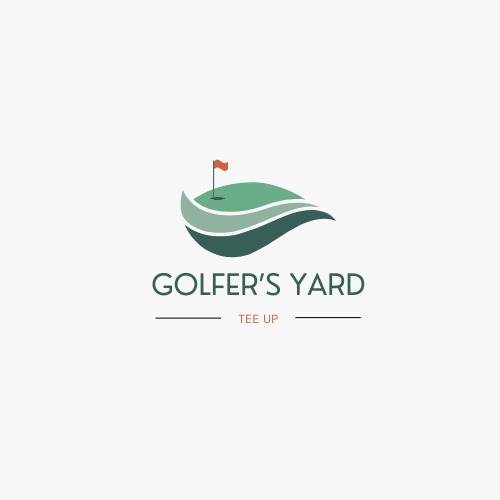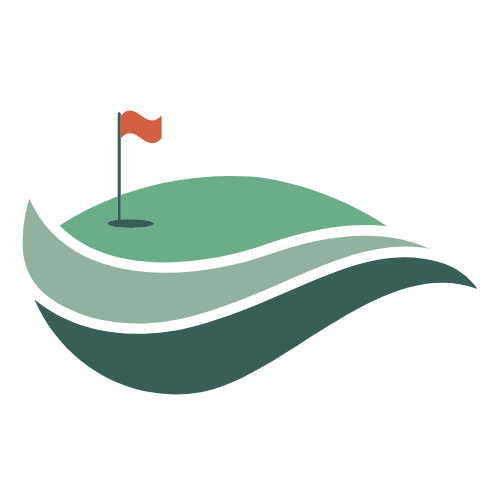Golf is one of the most relaxing and enjoyable sports. But it is also associated with a steep learning curve and golf terms that can be overwhelming to beginners.
These players have to master swing techniques in addition to mastering the use of a plethora of equipment.
In addition to this, they have to learn golf terms or jargon that players use on the course. Thankfully, you can learn them with ease and speak like one of those top golfers.
To help you get to that level of golf language mastery, we have crafted the 20 most used golf terms.
We will cover all sorts of terms ranging from types of equipment, scoring, rules, etiquette, and common golf slang. So, read on to learn more.
Common Golf Terminologies That Beginners and Pros Should Know
1. Par
Par is one of the commonly used golf terms.
It refers to the difficulty of every hole in a course. It may also refer to how many shots it should take to get the golf ball in the hole.
There are three main types of holes: par 3s, par 4s, and par 5s. These depend on the shortness of the holes. Par 3s are usually the shortest and easiest to ace.
A typical 18-hole golf course will have a par of 70-72. Here you will find a mix of par 3s, par 4s, and par 5s.
2. Birdie
A birdie is also one of the golf scoring terminologies that represents one score under a hole.
So, if a hole is par 3, a bird would be a score of two on the hole.
3. Bogey
If you already know what a birdie is, then a bogey is its opposite. It represents a score of one over on the hole.
For instance, if a player scores a five on a par 4, then that would be a single bogey.
A double bogey is when you score two over the hole. Likewise, a triple bogey is when you score three over the hole.
4. Eagle
Eagle is one of the common golf terms that players use to refer to when they have to shoot two under par on a hole.
For instance, if a golf hole is par 5, an eagle in this case would be a score of three on the hole.
5. Fairway
A fairway is among the commonly used golf terms that refer to the desired landing areas for a shot from the tee ground. Usually, the grass is smooth and mowed down.
It is easier to hit than the rough or sand. Surprisingly, there are no fairways on par 3 holes. But most golf courses have around 14 fairways to hit in regulation.
6. Green
The green is normally where the hole and flag are located. Some may call it the putting surface.
Another thing about the green is that there is a commonly tracked metric called greens in regulation.
For instance, if you play a par 4, you should strive to hit the green in two shots. So, just like hitting the fairways, the more greens you hit, the simpler it is to score low.
7. Bunker
A bunker is a term used to refer to a small pit or crater in the ground filled with sand.
It is a hazard in which players must not ground their club before making a shot.
8. Rough
Unlike the fairway, the rough is much thicker with long grass that makes it more complicated to hit from.
So, in most cases, golfers try to avoid the rough because clubs can get twisted in the thick grass.
It can also lead to wild shots. What you should know is that each golf course is different in terms of rough length.
9. Tee Box
In golf, a tee is simply a small pin or support that holds the ball for the first stroke of each hole.
So, a tee box is one of the golf terms used to refer to the starting point of the hole.
Usually, there are 3-5 tee boxes on each hole, but it depends on the golf course. From this position, you can insert a tee into the ground, but you should hit behind the markers.
10. Lie
Lie is the way the ball lands on the ground. So, a bad lie might be when it landed on the rough, dirt, or mash.
Similarly, a good lie might be when the ball rests on the fairway. There can also be a sidehill lie to indicate when the ball lies higher or lower than your feet.
11. Ace
An ace is among the few coveted accomplishments in golf.
It is an alternate golf term for ‘hole in one,’ and it refers to a situation when a player needs only one shot to get the ball in the hole.
In most cases, ‘holes in one’ or aces occur on par 3s. The main reason is that players usually reach the green on par 3s with their tee short.
12. Fore
Fore in golf is a term used by players when the ball is flying dangerously near another golfer. Golfers usually yell when such a situation occurs.
Basic golf etiquette requires that a player should wait for golfers to get out of the way before hitting a shot. This way, you are less likely to hit them with the ball.
13. Links
Links refer to a type of golf course or the style of golf that is played in such courses.
The most outstanding characteristic of links golf courses is that they have firm, tightly mowed grass covering the course.
They are also unique for their naturally undulating and rumped ground they are set on.
14. Handicap
Handicap is usually a measurement of the number of strokes you can take over par that a golfer makes on average during a round.
For instance, a golfer with a handicap of 15 is most likely to shoot a score of 87 on an average par 72 course. Likewise, a player with a handicap of 5 can hit a 77 on the same course.
15. Scratch
A player with a handicap of zero (0) is referred to as a scrap golfer. This term is mainly reserved for expert golfers. These pro golfers are expected to shoot even par on most courses.
16. Match Play vs. Stroke Play
Stroke play is one of the golf terms used to indicate how players score most rounds. In this case, every shot counts from tee to green.
To do so, you add up the number of strokes on the hole and transfer it to the scorecard.
Match play, on the other hand, is a unique format where one golfer is playing versus another golfer or a team.
In this case, they can only win or lose by one on a hole, even with stroke differential. The unique thing about this type of format is that it places more premium on tee shots.
17. Caddie
This is a person hired to carry your clubs and other accessories while on the course. He/she might give advice during the round.
Since they often have better course knowledge, they can help you shoot lower scores.
Some caddies don’t normally carry your clubs, but they walk ahead of your shots to locate them and provide necessary help.
They are called fore caddies. A forecaddy usually walks or rides in a cart.
18. Club
A golf club is an equipment used to hit a golf ball.
The long stick consists of a club head and a shaft with a grip. You are allowed to carry up to 14 clubs in your golf bag.
19. Driver
A driver is a type of club that golfers use to hit the ball the fastest off the tee.
These clubs have the lowest loft of any club and are best for long holes with fairly wide fairways.
20. Fairway Wood
A fairway is typically a golf club with a smaller head than a driver but larger than an iron.
These clubs offer a perfect balance between distance and accuracy.
They also have a slightly shorter shaft and better loft compared to a driver.
Other Common Golf Terms Worth Learning
- Hybrid
- Irons
- Training aids
- Alignment sticks
- Lip out
- Pop out
- Topped shot
- Driving range
- OB—Out of bounds
- hack/hacker
- First tee jitters
- Dogleg
- Fried egg
- Gimme
- Flop shot
- Putt
- Fringe
- Slice
- Hook
- Slope and course rating
- Short-sided
- Pull/push
- Ready golf
- Provisional ball
- Mulligan
- Chunk (fat) or thin (skinny)
- Scramble
- Yips
- Shank
- First tee jitters
- Lip out
- Topped shot
- Snowman
- Waggle
- Pin
- Chip
- Choke
- Closed face
- Bye
- Break
- Casual water
- Bite
- Best ball
- Bell
- Barber
- Barkie
- Back in the stance
- Backspin
- Carry
- Divot
- Draw
- Draw shot
- Fade
- Duff
- Flight
- Foursome
- Grain
- Grip
- Gross
- Hazard
- Honor
- Loft
- Markers
- Offset
- Penalty stroke
- Pick up
- Pitch
- Punch
- Ready golf
- Relief
- Sandbagger
- Shamble
- Short game
- Shiperio
- Swale
- Tee
- Toe
- Wedge
- Whiff
- Windcheater
- Zoomie
Final Word
There you have it. The above golf terms are just good to start with. As you can tell, there are several other terms that are equally important to learn.
So, once you master the top 20 terms, you can also learn the other terms.
Also try using them while on the course or even when discussing golf with your friends.
The more you play golf, especially with different people, the more you will increase your golf vocabulary.
If you are just getting started, just memorize a few basic terms so as not to sound like a total beginner.
Also Read:



